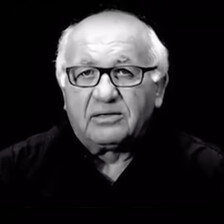The Electronic Intifada 16 March 2015
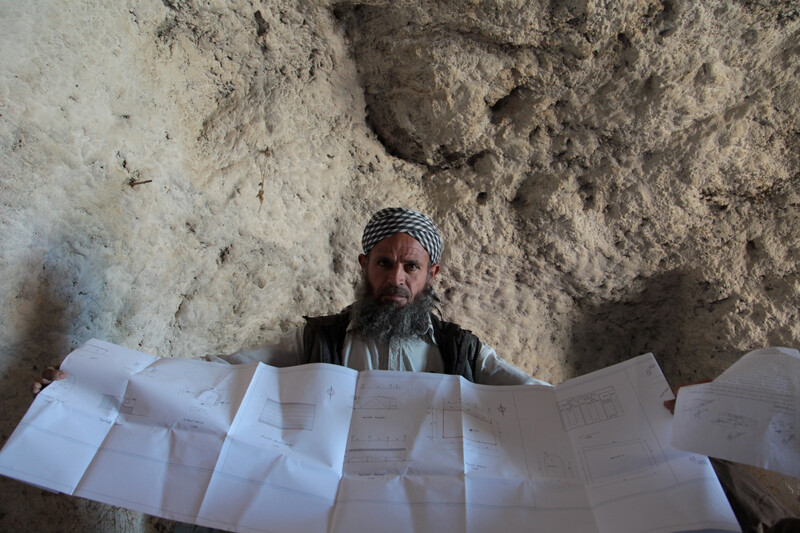
Said Mohammad Rabba, 50 years old, is the father of eleven children. He holds a document proving ownership of his land. “They sent me deportation notification and they arrested me several times. I decided to take care of my land and sheep and live on my land in a cave,” he said.
The Palestinians who have managed to remain in the Masafer Yatta area of the South Hebron Hills face imminent forcible transfer by the Israeli government.
The residents of these rural communities have lived in this part of the West Bank for decades, many of them since before the Israeli military occupation began in 1967 and long before the establishment of the State of Israel in 1948. Many families have documents proving ownership of the land.
In the 1980s, the Israeli army declared most of the area as a closed military zone for training — a designation imposed on approximately 18 percent of the West Bank. Approximately 5,000 Palestinians, mostly herders, live in those areas. The land of Masafer Yatta was subsequently leased to the World Zionist Organization for the development of Israel’s settlements, which are illegal under international law.
A pending case regarding the Masafer Yatta communities has remained before Israel’s high court since 2000. But a few years ago the Israeli authorities confirmed their intention to evacuate eight of the twelve villages, “exposing 1,000 people to the imminent threat of forcible transfer, which amounts to a grave breach of the Geneva Conventions and a war crime,” according to the human rights group Al-Haq.
Conditions in the villages are hard. They are not connected to water and electricity networks.
Children study far away from home because Israel forbids the building of public service infrastructure like schools and health clinics. Residents are frequently harassed by Israelis from the surrounding settlements encroaching on the villages’ lands.
Families in two other Masafer Yatta communities have already been forced to leave because of settler violence, according to the United Nations monitoring group OCHA.
Dozens of residential and agricultural structures in the villages have received demolition or stop work orders, forcing families to live in substandard housing.
Text by The Electronic Intifada. Photos and captions by West Bank-based photojournalist Mohammad Alhaj.
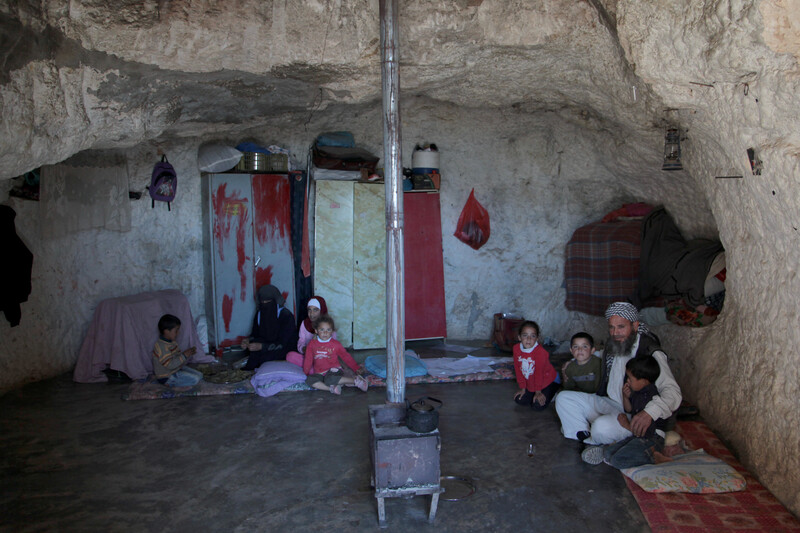
Said Rabba with his family inside the cave they live in on his land in al-Rakeez village in the Masafer Yatta area of the South Hebron Hills.
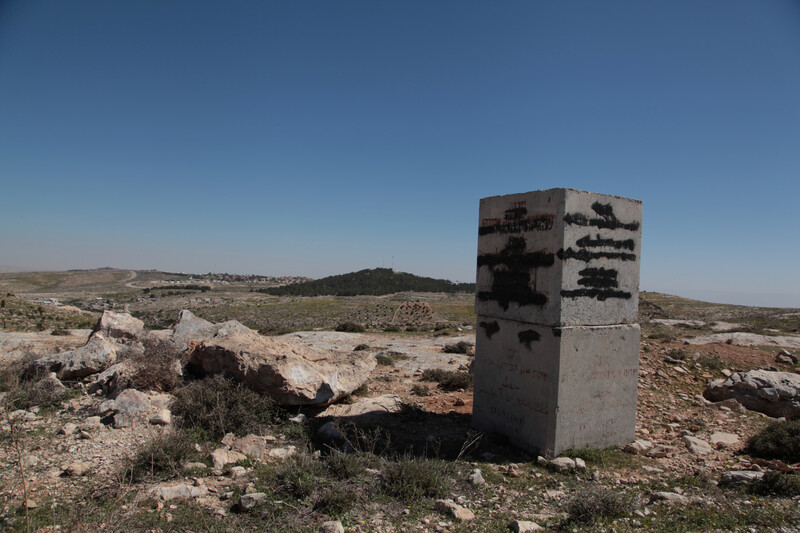
A concrete block installed by the Israeli military warns that the area is a closed firing zone. The text was painted over.
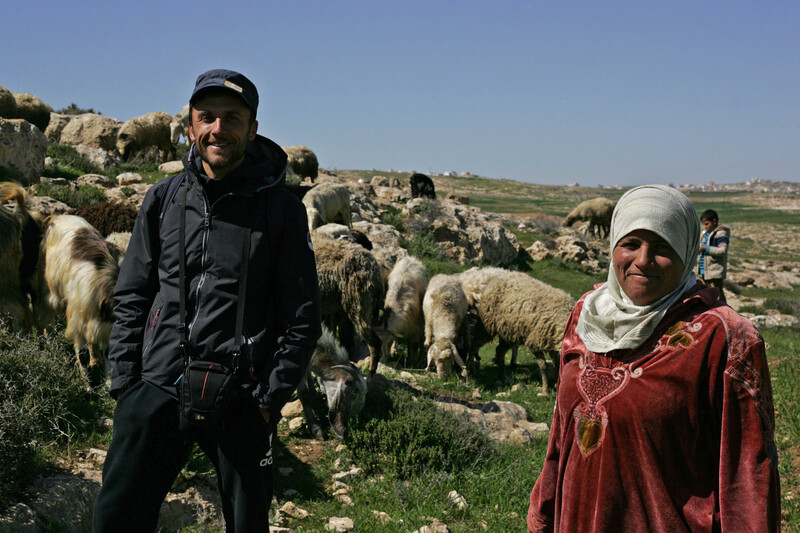
A European volunteer who didn’t give his name because he feared being denied an Israeli visa in the future said he visits herder Umm Muhammad on a daily basis. “Many times Israeli settlers tried to take her sheep but I stopped that when they noticed that I was filing them. I always keep the camera with me; my job is to document the assaults against Palestinians in al-Tuwani village,” he said.
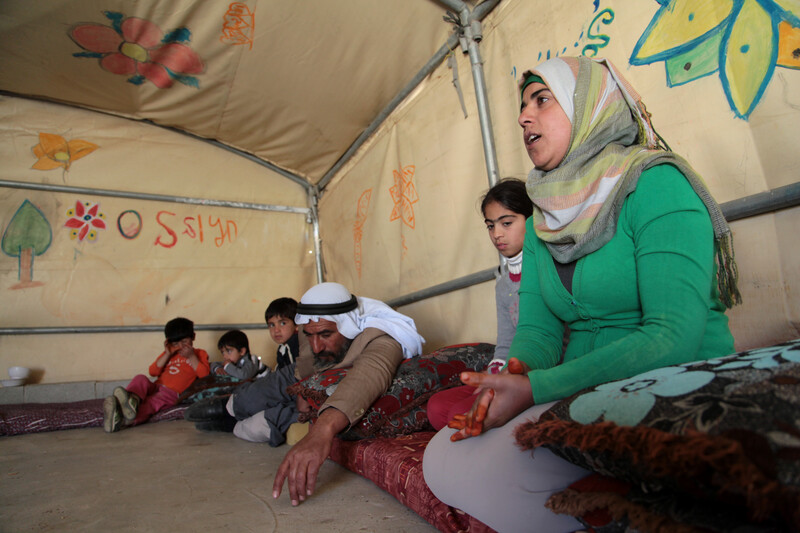
Sawsan Muhammad Hamamdah, a student, sits next to her father and brothers inside the tents at al-Mfaqara village. “I have seven brothers and four sisters. My father was grazing our sheep in the hills like usual on November 24, 2011. Suddenly the Israeli army came with their bulldozers,” she said. She defended her family’s home to prevent its demolition. “I tried to stop the the officer who was leading them, then he sprayed a gas on my face, and they took me to a jail for fifteen days. when came back to our house it was destroyed.”
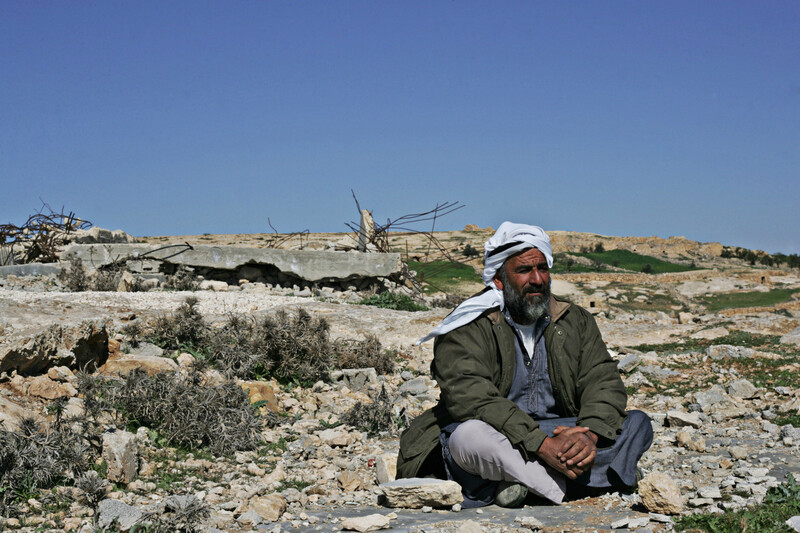
Mohammed Hussein Hamamdah, Sawsan’s father: “The Israeli army arrested my daughter when she tried to defend our land, houses and the mosque from the Israeli army bulldozers. And they released her after they demolished everything, so I took to living in a cave on my land with my family and to bother the Israeli army in staying my land. I know the Israeli military will not stop, but I’ll never make it easy in leaving my property.”
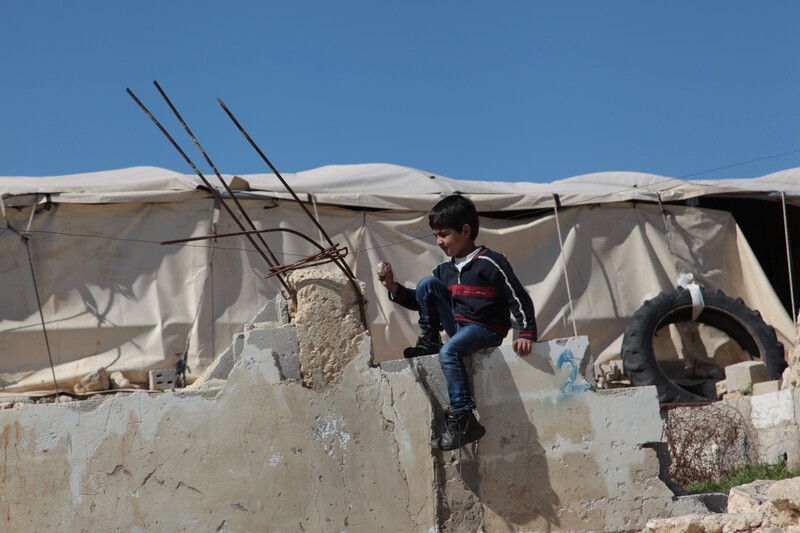
Fahed, six years old, sits on the remains of his family’s home in al-Mfaqara village, which was destroyed by Israeli army. “I go to to school in al-Tuwani village. Sometimes I fear harassment by Israeli settlers while I’m waiting on the main street for a taxi to go to school. But I feel more fear if Israeli settlers seized our lands and house, then I’ll not be able to live here,” he said.

Ruins of a destroyed home in Um al-Kheir village; in the background are houses in the al-Karmel settlement colony.
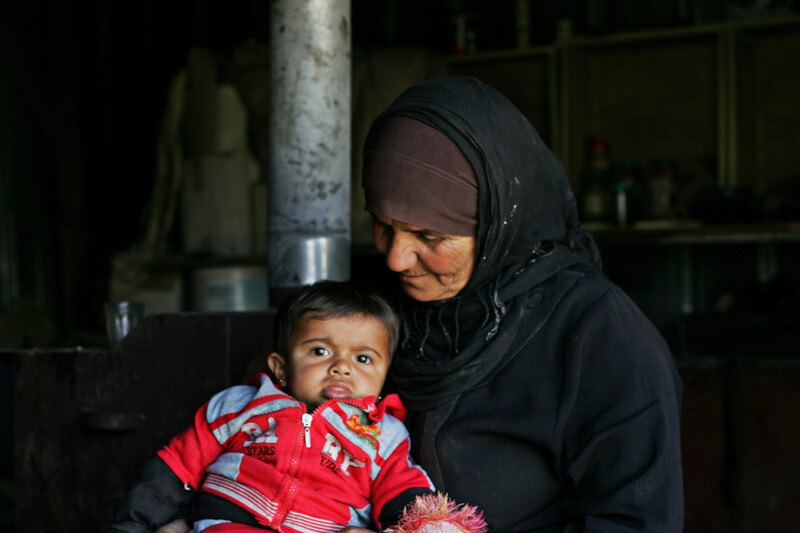
A woman named Halima holds her grandson inside her tent in Umm al-Kheir village. “We have been here since 1948; I born here, and we bought this land. The Israeli settlers came in 1981 and began with a small number of caravans. But today al-Karmel settlement covers the hillside,” she said. The Israeli army keep destroying the houses we are building. Even the tent which we got from the Red Cross was confiscated by the Israeli army. They want our land clean to expand their settlement. We do not have water sources, electricity and a freedom on our land here in Umm al-Kheir village.”




